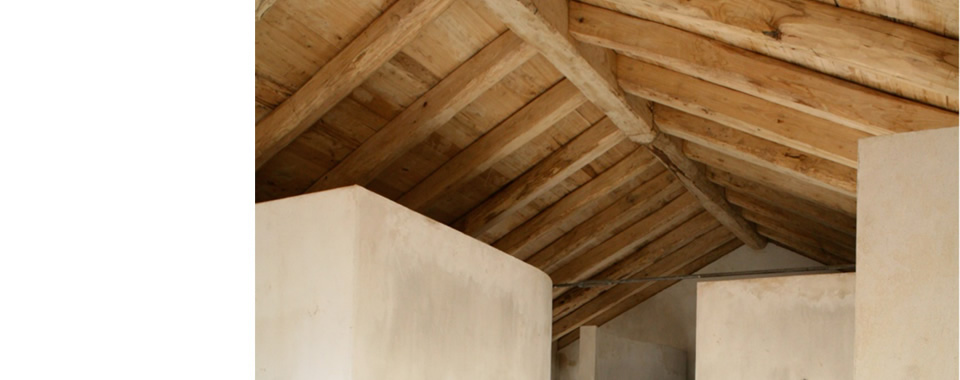

Score - Sustainable Construction in Rural and Fragile Areas for Energy efficiency
Guidelines for Integrated territorial Planning:
Biomass
The following guidelines come from a deep analysis of case studies, norms and regulations, in relation to the both national and regional level. This analysis is summarized in a card that can be downloaded in Spanish language.
By the term “biomass” we can find a quite different range of biodegradable products, and biological debris with various origins, such as agricultural and fishing activities, forest maintenance, and even industrial waste. These materials, properly processed, can be used as bio combustible through several transformations with the aim of obtaining useful energy. Andalusia and the rest of the Mediterranean area, is a region where all these productive activities are widely developed, due to the favorable climate conditions. Therefore is a perfect zone for the implantation of biomass technology implementation.
One of the main strengths of this technology comes from the reusing of products that would otherwise be treated as waste. This means a new recycling process of already manufactured materials to reduce debris production, and transforming waste to generate energy. This minimizes the overall impact on the environment through lower CO2 emissions. Although combustion is needed in the process, studies have shown that the final CO2 outcome is positive with consideration for all factors involved.
The performance of this kind of combustible can reach the percentage of 90%, what means a maximum exploitation of the resource. The biomass production is continuous, and only depends on the recharge supplies, as is independent of outer climatic conditions.
Biomass production can be considered as a support for rural enhancement, helping depressed zones economy to generate employment and wealth. This is an example of the social face of sustainability. The production of this resource is non pollutant, as it doesn´t suppose the affection of other ecosystems, in opposition to hydrocarbon and derivatives of petrol.
The cost of biomass is much lower than others, as it is the product of an existing process. Consequently its price is quite stable, in opposition to fuel or electricity which are in a permanent increasing evolution.
Biomass production in forests contributes also to avoid other environmental hazard, such as fire danger. In addition it assists in improving the aesthetics of the natural environment and can also support the growing of the main tree mass.
On the other hand, the thermal efficiency of the biomass system is lower than others; solar collectors in summer, or fuel boilers, for example. Therefore, the needs for storage volumes are higher, what can be an obstacle when the time to implement this technology comes, especially in both renovation and historical contexts.
A compromise between energy use and human consumption can appear in the agricultural scope, as energy production can compete with food cultivation when the same vegetable species are used for both purposes. The potential consequences of this dilemma could be the increase of basic food price, so therefore it is important to treat the food production as a priority, in that case.
Another potential difficulty with the implementation of this technology is related to economic concerns. Combustible supply and ashes cleaning systems are more complex than conventional boilers, and require specialized personnel to install and maintain. That’s why function and maintenance expenses are currently higher than fuel systems. Therefore, the amortization period for this technology is longer, especially for small projects, like single-family residential buildings. This gap in the first investment profitability was usually saved by subventions provided by regional administration. This policy is now in danger due to the current economical situation.
The diffusion of sustainable works with biomass technology could be facilitated following some advices such as:
- Diffusion and education programs about this technology in the aim of consolidate the existing net of professionals and companies specialized in this renewable energy;
- Research programs, with the objective of both finding as more alternatives for biomass products as possible, trying to avoid the conflict energy/food, and performance improvement options for the equipments.
- Maintain the policy of economic help for this technology, at least in the first phases of diffusion.
Pursuant to the guidelines written above, here are synthetically reported the criteria/examples for pilot projects to be financed in MED territory, in relation with the specific treated theme.
These criteria/examples, together with the ones resulting from all the themes of eco-construction tool matrix, will make up a Bio-construction Action Plan for each partner countries.
- Projects for education and research programs about biomass energy, which would help in the progress of alternatives to the conflict energy/food, and increasing the performance of equipments.
The internationally recognized green building certifications, normally give few indications about the use of biomass systems. The same happens for the most common Spanish certification system. Nowadays the only current regulation about this theme is the Decree 47/2007 (Basic Procedure for Energetic Efficiency Certification in New Buildings), which make reference to the Rules for Building Thermal Systems (RITE) and the Technical Building Code (CTE). These rules are mainly focused in solar alternative (solar collectors and photovoltaic) and the limitation of conventional energy using only for hot water or heating production (point 2.1 of HE-4, CTE; points IT.1.2.4.6 and IT.1.2.4.7, RITE). It isn’t considered necessary that green building certifications as should be made more complicated. However we think it would be recommended to consider limitations of the whole energy consumption of buildings, including cooling or electricity.
Case studies
- Municipal Swimming Centre, Barbate (Cadiz).
- IKEA Comercial Centre, Jerez de la Frontera (Cadiz)
